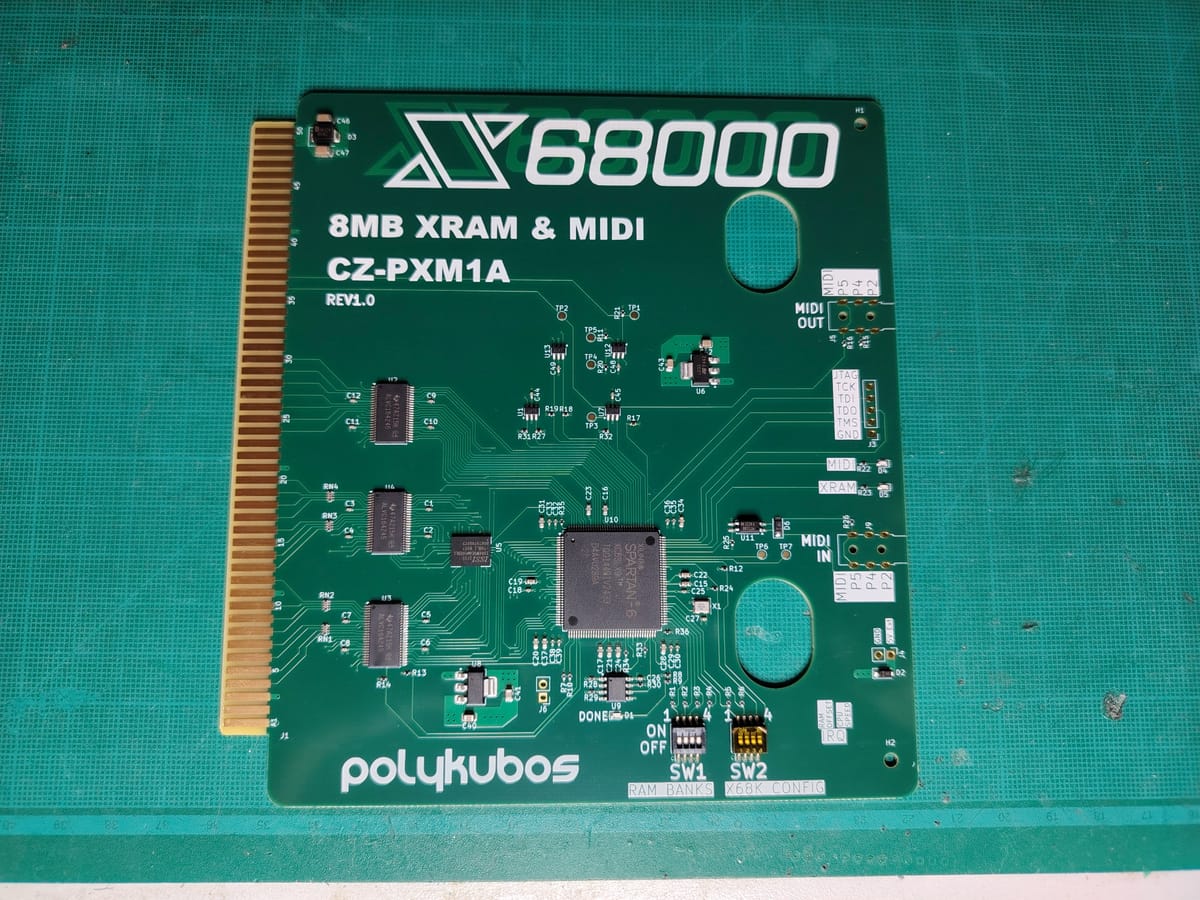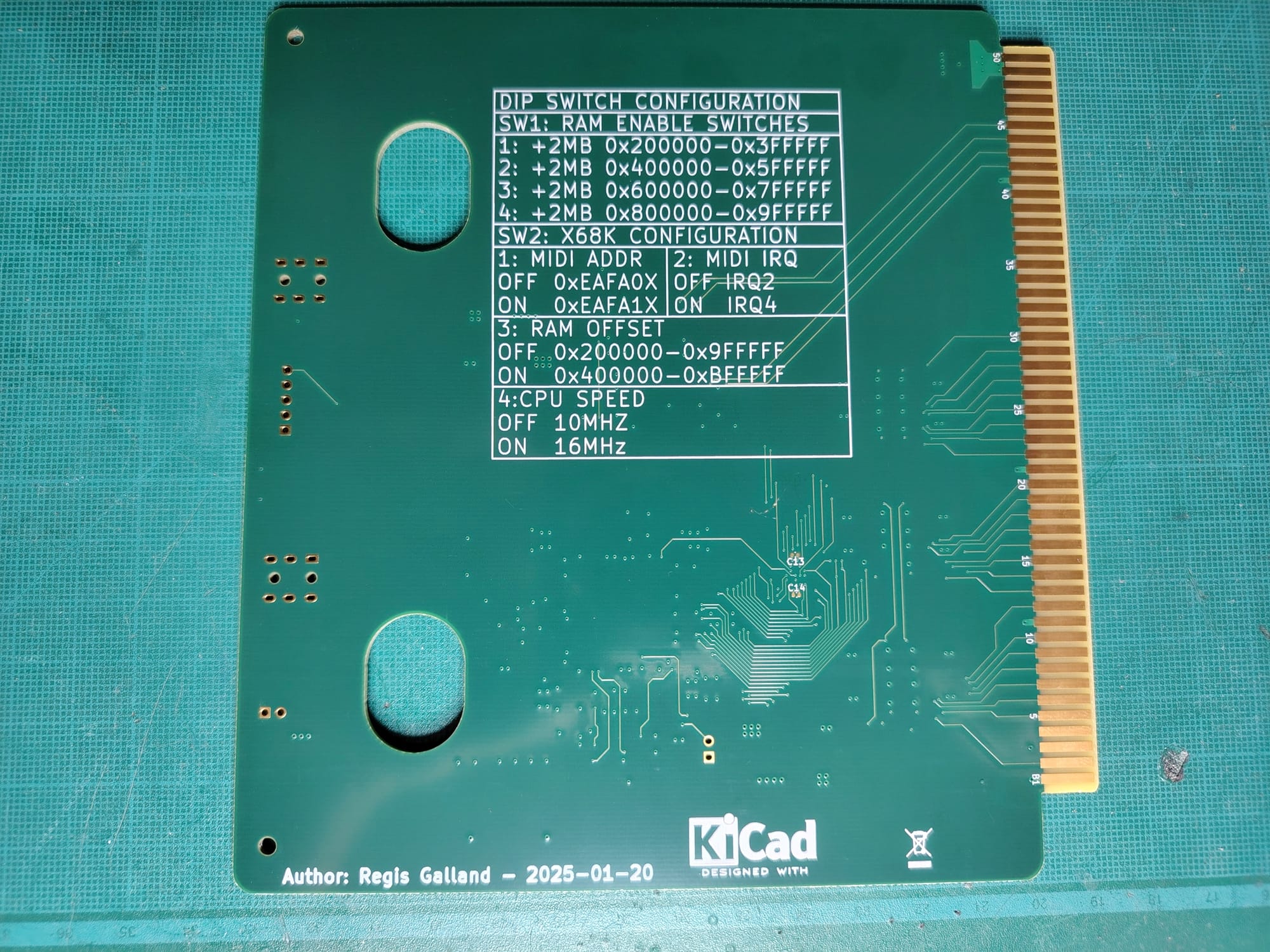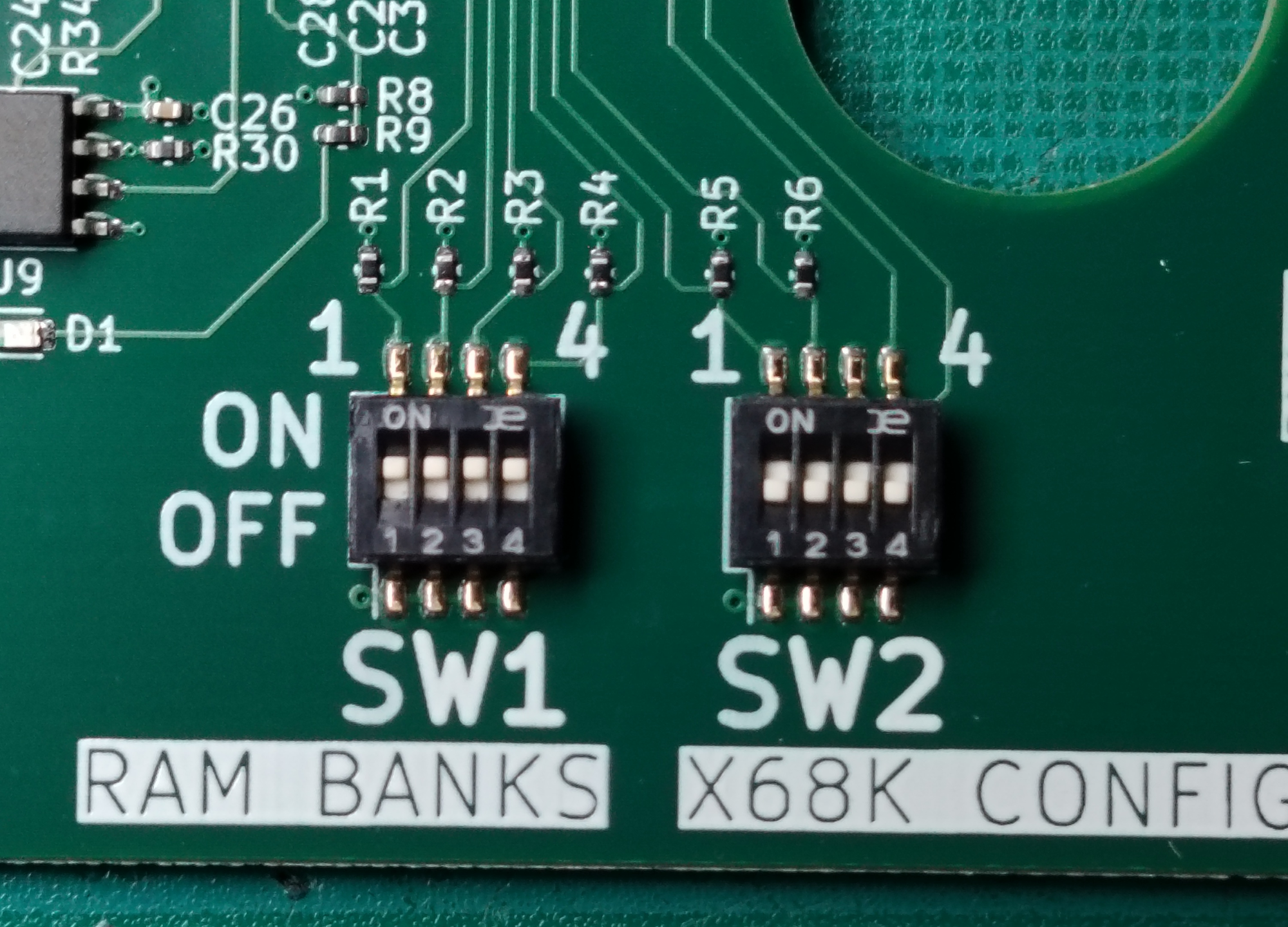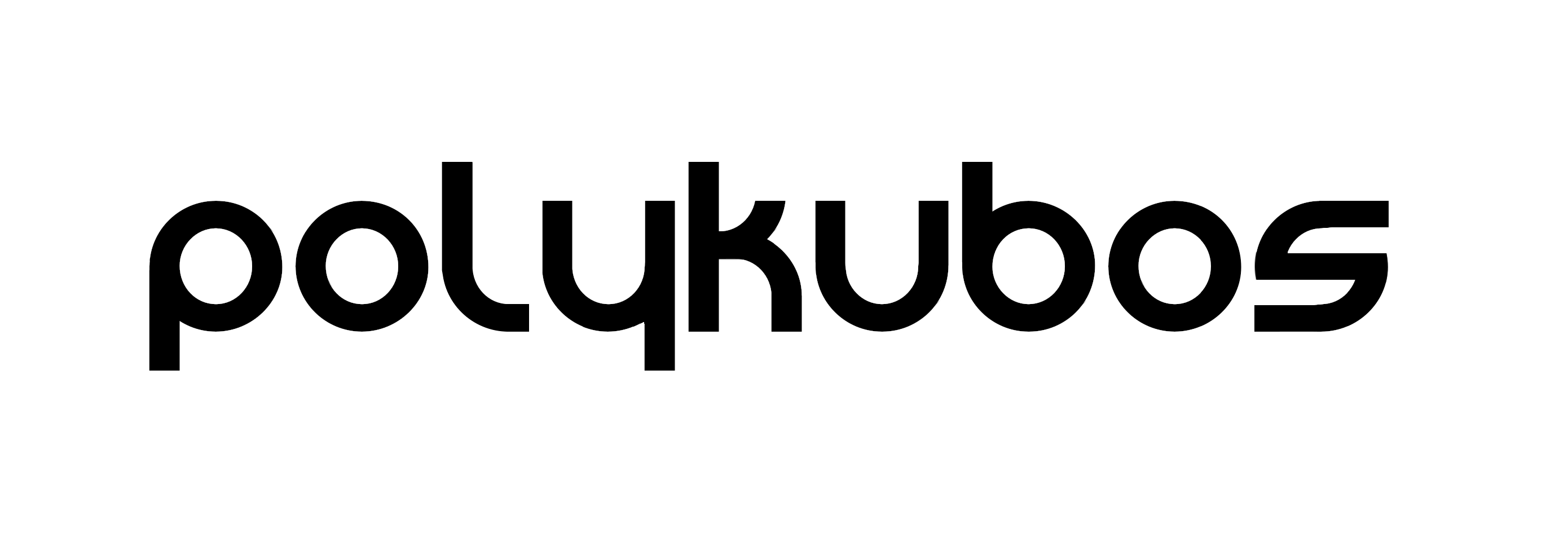Sharp X68000 RAM+MIDI expansion board (CZ-PXM1A)

The Sharp x68000 SRAM + MIDI card (CZ-PXM1A) by Polykubos adds MIDI functionality to Sharp x68000 systems and provides up to 8 MB of RAM (per card).
Two Polykubos cards can be installed in Sharp x68000 machines with at least two expansion slots, allowing for a total of 12 MB of RAM.
The card fits into a free expansion slot (both slots are compatible thanks to the use of 3.5mm Type A jacks instead of standard MIDI DIN connectors), and compatibility has been tested with Sharp x68000 CZ-6xx series systems (Classic, ACE/ACE-HD, PRO/PRO-HD, EXPERT, EXPERT II, and XVI).
It is based on an FPGA-type component, which can be reprogrammed and updated. Owners of the Polykubos x68000 SRAM + MIDI card can update it themselves (if they have the necessary equipment) or send the card to the Polykubos store for an update (the owner covers shipping costs to Polykubos as well as return shipping and handling fees).
Current Hardware revision : 1.0
Current FPGA firmware version : 1.2
updated on 26th of July 2025
ChangeLog
- April 2025 - FPGA Firmware 1.0 : Initial version
- April 2025 - Hardware Rev1.0: Initial version
- June 2025 - FPGA Firmware 1.1 : Implementation of the click counter in the YM3802. Some games (like Mahou Daisakusen) rely on the click counter for timing to play MIDI music. This is is what is included in this version as well as an overall tidy up of the code
- July 2025 - FPGA Firmware 1.2 : Fixes bug discovered in Final Fight when switching audio to MIDI. Assumption was made that a register would enable or disable the interrupt vector register output. Turns out it is only related to the Vector Read input on the YM3802 which is not used by the X68000
Understanding the configuration DIP switches

The RAM expansion can only work on machines already equipped with 2MB of RAM. The Classic and the ACE versions of the X68000 require a 1 MB daughter board and the Expert comes with 2MB by default and seems to be the case for all of the other more recent models. Another aspect about the RAM is that it must be contiguous within the address space so no gaps are allowed.
The RAM is divided into 4 banks of 2MB and each switch in SW1 can individually turn the banks on or off. By default, the boards are shipped with all switches set to ON which will enable the full 8MB of RAM.
Should the machine already have extra RAM (using something like the AICZ6BE2/AICZ6BE4) it will be required to change the settings to avoid data bus conflicts. If the machine already has 4MB of RAM, it will be possible to add the extra an 8MB to reach the maximum 12MB that can be seen by the processor by switching SW2-3 to the ON position. This setting pushes the start address by 2MB thus accounting for the existing RAM on the machine. What happens if the machine already has 6MB? In this case, switch SW2-3 to the ON position once again but also switch SW1-1 tot he OFF position in order to turn off the RAM bank that would conflict with the RAM on the machine. This will still provide the full 12MB that can be addressed by the machine.
In the same vein, should 2 expansion boards be used with a machine using 2MB, the first board will add the full 8MB of RAM without address shifting using the default configuration while the second board will provide the remaining 2 MB using the following configuration: SW1-1, SW1-2 and SW1-3 set to OFF, SW21-4 set to ON and SW2-3 set ON.
SW2-1: MIDI register address setting. Most games are configured to work using the 0xEAFA0X by default. SW2-1 must be set to OFF to use this address. When switch SW2-1 is set to ON it will use the alternative address, 0xEAFA1X. However, it has to be noted that this could cause some games to crash as as the default address is expected. Generally, this setting is used if a MIDI card is already present to prevent bus conflicts.
SW2-2: MIDI IRQ channel. MIDI can use either IRQ2 or IRQ4 based on SW2-3 position. ON=IRQ4 and OFF=IRQ2. The setting does not seem to make a difference as I have not encountered a game that required a specific IRQ channel. However, when 2 MIDI boards are used, each board must use a different channel.
SW2–4: not used at the moment.

